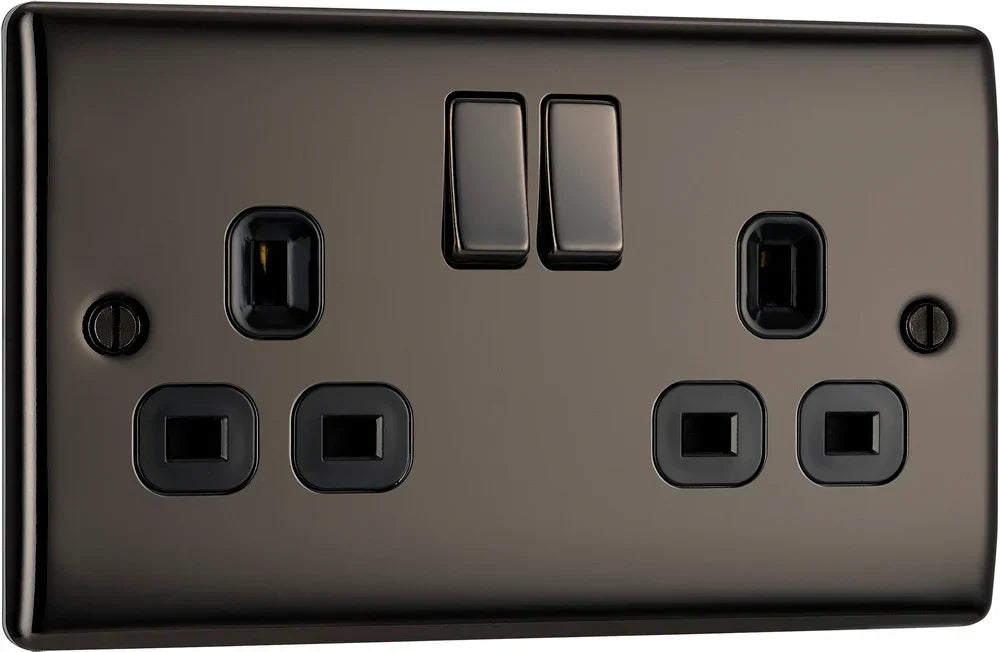
A Complete Guide to Choosing the Right Electrical Socket for Your Home or Project
Understanding Socket Types
Standard Power Sockets
Single Sockets
- Ideal for dedicated appliances like refrigerators or washing machines
- Takes up less wall space
- Generally more affordable
- Perfect for areas with limited electrical demand

Related product: https://westbasedirect.com/products/nbn22b
Double Sockets
- Provides two outlets in the same space as a single socket
- More cost-effective for installation
- Better for areas requiring multiple connections
- Most popular choice for living spaces
Specialised Sockets
USB Sockets
- Combines traditional power outlets with USB charging ports
- Eliminates need for charging adapters
- Available in various configurations (1A, 2.1A, 3.1A)
- Perfect for bedrooms, kitchens, and office spaces
Smart Sockets
- WiFi-enabled for remote control via smartphone apps
- Scheduling and timer functions
- Energy monitoring capabilities
- Voice control compatibility with Alexa or Google Assistant
 Related Product: https://westbasedirect.com/collections/smart-socket/products/vpab30536bk
Related Product: https://westbasedirect.com/collections/smart-socket/products/vpab30536bk
Outdoor Sockets
- Weatherproof design with IP66 or IP67 rating
- Protected against dust and water ingress
- Often feature flip-up covers for weather protection
- Essential for garden equipment and outdoor lighting
Location-Specific Considerations
Kitchen Requirements
Kitchens demand careful socket planning due to multiple appliances and safety concerns around water sources.
Key Considerations:
- Position sockets at least 30cm from sink edges
- Install dedicated circuits for high-power appliances
- Consider appliance placement during kitchen design
- Ensure adequate socket quantity for small appliances
Recommended Types
- Double sockets for counter areas
- Dedicated sockets for built-in appliances
- USB sockets for charging devices
- Waterproof sockets near sinks (where permitted)
Bathroom Safety
Bathroom electrical installations are subject to strict safety regulations due to the presence of water.
Safety Requirements:
- Only shaver sockets permitted in most bathroom zones
- Must be installed outside hazardous zones (0, 1, and 2)
- Require isolation transformers for safety
- Professional installation mandatory
Living Areas and Bedrooms
These spaces require versatile socket solutions to accommodate various devices and furniture arrangements.
Planning Tips:
- Consider furniture placement to avoid blocked sockets
- Install sockets at appropriate heights (typically 15-30cm from floor)
- Include USB charging points for modern devices
- Plan for future technology needs
Home Office Setup
Modern home offices require robust electrical infrastructure for computers, monitors, and other equipment.
Essential Features:
- Sufficient socket quantity for all equipment
- Surge protection for sensitive electronic
- Cable management solutions
- Backup power considerations
Safety Features and Standards
RCD Protection
Residual Current Devices (RCDs) are essential safety features that protect against electrical faults.
Benefits:
- Instantly cuts power when earth faults detected
- Prevents electric shock and fire risks
- Required by modern electrical regulations
- Particularly important for outdoor sockets
Surge Protection
Electrical surges can damage expensive equipment and create safety hazards.
Protection Methods:
- Surge-protected sockets for sensitive equipment
- Whole-house surge protection systems
- Individual surge protectors for valuable electronics
- Lightning protection for outdoor installations
Child Safety
Homes with young children require additional safety considerations.
Safety Features
- Shuttered sockets prevent foreign object insertio
- Tamper-resistant designs
- Socket covers for unused outlets
- Higher mounting positions where appropriate
Material and Design Considerations
Durability Factors
Plastic vs Metal:
- Plastic sockets are more affordable and suitable for most applications
- Metal sockets offer greater durability and premium appearance
- Consider fire-resistant materials for safety-critical areas
- UV-resistant materials for outdoor installations
Aesthetic Integration
Design Options:
- White plastic for standard applications
- Brushed steel or chrome for modern interiors
- Coloured options to match décor
- Flush-mounted vs surface-mounted designs
Environmental Conditions
Indoor Considerations:
- Standard sockets for normal domestic environments
- Moisture-resistant options for kitchens and utility room
- Heat-resistant materials near fireplaces or radiators

Related products: https://westbasedirect.com/collections/weatherproof-sockets/products/wp22wr
Outdoor Requirements:
- Weatherproof enclosures with appropriate IP ratings
- UV-resistant materials for sun exposure
- Corrosion-resistant finishes for coastal areas
Installation Planning
Professional vs DIY
When to Call Professionals:
- New circuit installation
- Bathroom electrical work
- Outdoor socket installation
- Consumer unit modifications
- Any work requiring building control notification
DIY Considerations:
- Simple socket replacement may be DIY-friendly
- Must understand electrical safety principles
- Should test all work with appropriate equipment
- Consider professional inspection for peace of mind
Future-Proofing
Planning Ahead:
- Install more sockets than currently needed
- Consider emerging technologies like EV charging
- Plan for home automation integration
- Include provision for renewable energy systems
Cost Considerations
Initial Investment
Budget Factors:
- Socket type and quality
- Installation complexity
- Number of sockets required
- Professional installation costs
Long-term Value:
- Energy-efficient options reduce running costs
- Quality sockets last longer and require less maintenance
- Smart features can provide energy savings
- Proper installation prevents costly repairs
Maintenance and Lifecycle
Ongoing Costs:
- Regular safety testing
- Replacement of worn components
- Upgrades for changing needs
- Professional maintenance for complex systems
Making the Right Choice
Assessment Checklist
Before selecting sockets, consider:
- Current and future electrical needs
- Safety requirements for each location
- Budget constraints and long-term value
- Aesthetic preferences and design integration
- Professional installation requirements
Expert Recommendations
Best Practices:
- Consult qualified electricians for complex installations
- Research local electrical codes and regulations
- Consider energy efficiency and smart home integration
- Plan for future expansion and technology changes
- Prioritise safety over cost savings
Conclusion
Choosing the right electrical socket involves balancing safety, functionality, aesthetics, and cost considerations. By understanding the different types available and carefully considering your specific needs, you can make informed decisions that will serve your home or office well for years to come.
Remember that electrical work should always prioritise safety, and when in doubt, consult with qualified professionals who can ensure your installation meets all relevant standards and regulations. The right socket choice today can prevent problems tomorrow and provide the flexibility needed for our increasingly connected world.
Energizer A-Rated Bulbs

Energizer S29628 A Rated LED Elite GLS E27 Filament 806lm 3.8W 2700K (Warm White)
Energizer S29628 A Rated LED Elite GLS E27 Filament 806lm 3.8W 2700K (Warm White) Energizer products are recognised as one of the most trusted and ...
View full details
Energizer S29628 A Rated LED Elite GLS E27 Filament 806lm 3.8W 2700K (Warm White)(12 Pack)
Energizer S29628 A Rated LED Elite GLS E27 Filament 806lm 3.8W 2700K (Warm White)(12 Pack) Energizer products are recognised as one of the most tru...
View full details
Energizer S29629 A Rated LED Elite GLS E27 Filament 806lm 3.8W 6500K (Daylight)
Energizer S29629 A Rated LED Elite GLS E27 Filament 806lm 3.8W 6500K (Daylight) Energizer products are recognised as one of the most trusted and hi...
View full details
Energizer S29629 A Rated LED Elite GLS E27 Filament 806lm 3.8W 6500K (Daylight)(12 Pack)
Energizer S29629 A Rated LED Elite GLS E27 Filament 806lm 3.8W 6500K (Daylight)(12 Pack) Energizer products are recognised as one of the most trust...
View full details
Energizer S29630 A Rated LED Elite GLS B22 Filament 806lm 3.8W 2700K (Warm White)
Energizer S29630 A Rated LED Elite GLS B22 Filament 806lm 3.8W 2700K (Warm White) Energizer products are recognised as one of the most trusted and ...
View full details
Energizer S29630 A Rated LED Elite GLS B22 Filament 806lm 3.8W 2700K (Warm White)(12 Pack)
Energizer S29630 A Rated LED Elite GLS B22 Filament 806lm 3.8W 2700K (Warm White)(12 Pack) Energizer products are recognised as one of the most tru...
View full details
Energizer S29631 A Rated LED Elite GLS B22 Filament 806lm 3.8W 6500K (Daylight)
Energizer S29631 A Rated LED Elite GLS B22 Filament 806lm 3.8W 6500K (Daylight) Energizer products are recognised as one of the most trusted and hi...
View full details
Energizer S29631 A Rated LED Elite GLS B22 Filament 806lm 3.8W 6500K (Daylight)(12 Pack)
Energizer S29631 A Rated LED Elite GLS B22 Filament 806lm 3.8W 6500K (Daylight)(12 Pack) Energizer products are recognised as one of the most trust...
View full details
Energizer S29632 A Rated LED Elite GLS E27 Filament 1521lm 7.2W 2700K (Warm White)
Energizer S29632 A Rated LED Elite GLS E27 Filament 1521lm 7.2W 2700K (Warm White) Energizer products are recognised as one of the most trusted and...
View full details
Energizer S29632 A Rated LED Elite GLS E27 Filament 1521lm 7.2W 2700K (Warm White)(12 Pack)
Energizer S29632 A Rated LED Elite GLS E27 Filament 1521lm 7.2W 2700K (Warm White)(12 Pack) Energizer products are recognised as one of the most tr...
View full details
Energizer S29633 A Rated LED Elite GLS E27 Filament 1521lm 7.2W 6500K (Daylight)
Energizer S29633 A Rated LED Elite GLS E27 Filament 1521lm 7.2W 6500K (Daylight) Energizer products are recognised as one of the most trusted and h...
View full details
Energizer S29633 A Rated LED Elite GLS E27 Filament 1521lm 7.2W 6500K (Daylight)(12 Pack)
Energizer S29633 A Rated LED Elite GLS E27 Filament 1521lm 7.2W 6500K (Daylight)(12 Pack) Energizer products are recognised as one of the most trus...
View full details
Energizer S29634 A Rated LED Elite GLS B22 Filament 1521lm 7.2W 2700K (Warm White)
Energizer S29634 A Rated LED Elite GLS B22 Filament 1521lm 7.2W 2700K (Warm White) Energizer products are recognised as one of the most trusted and...
View full details
Energizer S29634 A Rated LED Elite GLS B22 Filament 1521lm 7.2W 2700K (Warm White)(12 Pack)
Energizer S29634 A Rated LED Elite GLS B22 Filament 1521lm 7.2W 2700K (Warm White)(12 Pack) Energizer products are recognised as one of the most tr...
View full details
Energizer S29635 A Rated LED Elite GLS B22 Filament 1521lm 7.2W 6500K (Warm White)
Energizer S29635 A Rated LED Elite GLS B22 Filament 1521lm 7.2W 6500K (Warm White) Energizer products are recognised as one of the most trusted and...
View full details
Energizer S29635 A Rated LED Elite GLS B22 Filament 1521lm 7.2W 6500K (Warm White)(12 Pack)
Energizer S29635 A Rated LED Elite GLS B22 Filament 1521lm 7.2W 6500K (Warm White)(12 Pack) Energizer products are recognised as one of the most tr...
View full details
Energizer S29636 A Rated LED Elite Candle E27 Filament 470lm 2.2W 2700K (Warm White)
Energizer S29636 A Rated LED Elite Candle E27 Filament 470lm 2.2W 2700K (Warm White) Energizer products are recognised as one of the most trusted a...
View full details
Energizer S29636 A Rated LED Elite Candle E27 Filament 470lm 2.2W 2700K (Warm White)(12 Pack)
Energizer S29636 A Rated LED Elite Candle E27 Filament 470lm 2.2W 2700K (Warm White)(12 Pack) Energizer products are recognised as one of the most ...
View full details
Energizer S29637 A Rated LED Elite Candle E27 Filament 470lm 2.2W 6500K (Daylight)
Energizer S29637 A Rated LED Elite Candle E27 Filament 470lm 2.2W 6500K (Daylight) Energizer products are recognised as one of the most trusted and...
View full details
Energizer S29637 A Rated LED Elite Candle E27 Filament 470lm 2.2W 6500K (Daylight)(12 Pack)
Energizer S29637 A Rated LED Elite Candle E27 Filament 470lm 2.2W 6500K (Daylight)(12 Pack) Energizer products are recognised as one of the most tr...
View full details
Energizer S29638 A Rated LED Elite Candle B22 Filament 470lm 2.2W 2700K (Warm White)
Energizer S29638 A Rated LED Elite Candle B22 Filament 470lm 2.2W 2700K (Warm White) Energizer products are recognised as one of the most trusted a...
View full details
Energizer S29638 A Rated LED Elite Candle B22 Filament 470lm 2.2W 2700K (Warm White)(12 Pack)
Energizer S29638 A Rated LED Elite Candle B22 Filament 470lm 2.2W 2700K (Warm White)(12 Pack) Energizer products are recognised as one of the most ...
View full details
Energizer S29639 A Rated LED Elite Candle B22 Filament 470lm 2.2W 6500K (Daylight)
Energizer S29639 A Rated LED Elite Candle B22 Filament 470lm 2.2W 6500K (Daylight) Energizer products are recognised as one of the most trusted and...
View full details
Energizer S29639 A Rated LED Elite Candle B22 Filament 470lm 2.2W 6500K (Daylight)(12 Pack)
Energizer S29639 A Rated LED Elite Candle B22 Filament 470lm 2.2W 6500K (Daylight)(12 Pack) Energizer products are recognised as one of the most tr...
View full details
Energizer S29640 A Rated LED Elite Candle E14 Filament 470lm 2.2W 2700K (Warm White)
Energizer S29640 A Rated LED Elite Candle E14 Filament 470lm 2.2W 2700K (Warm White) Energizer products are recognised as one of the most trusted a...
View full details
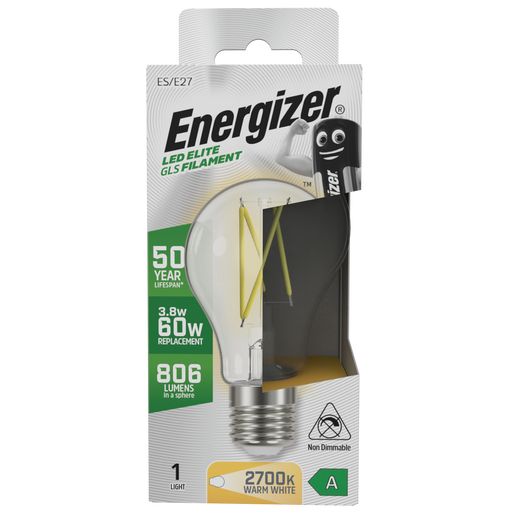
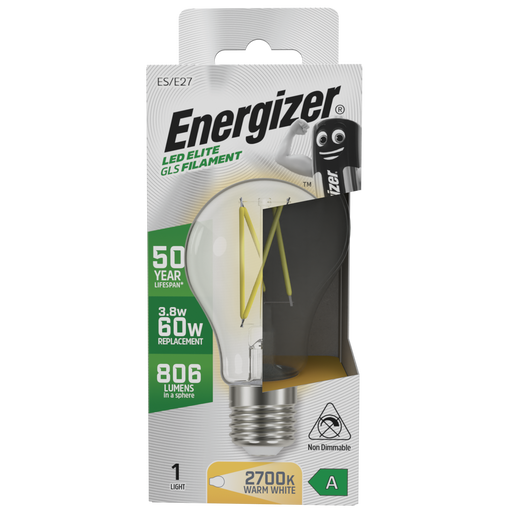
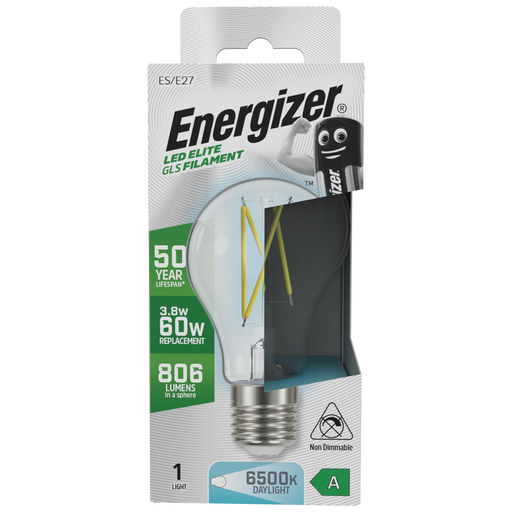

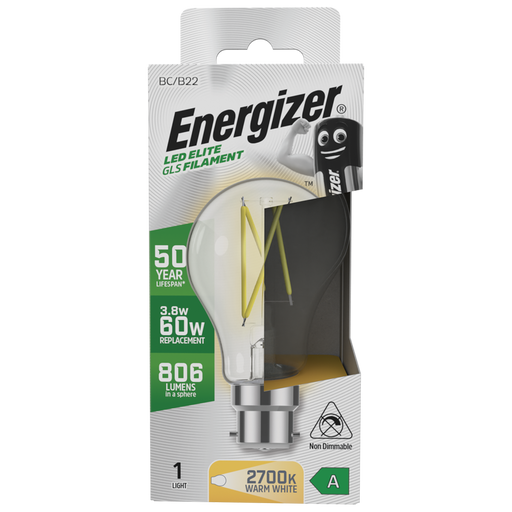

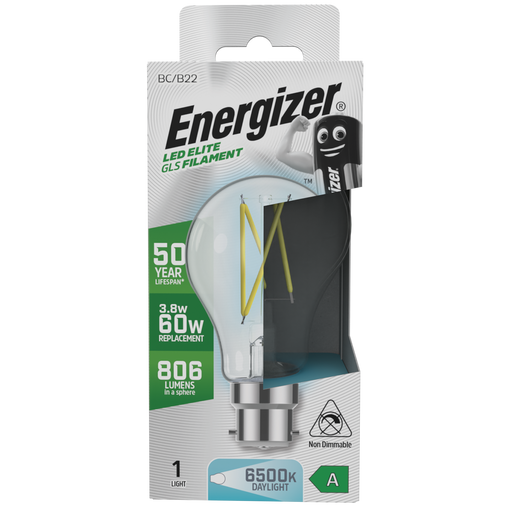

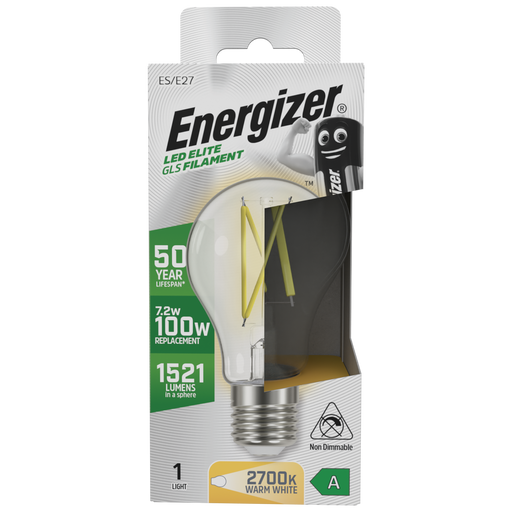

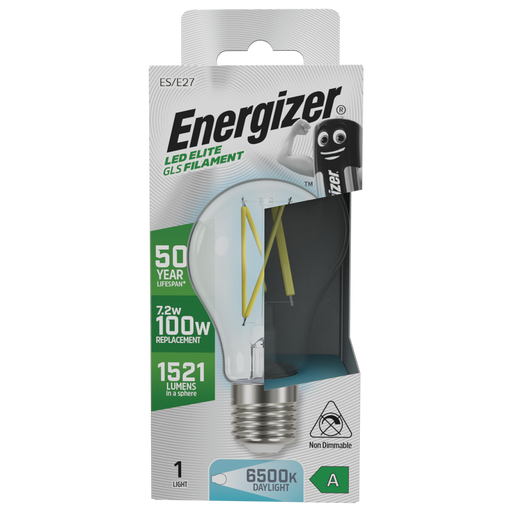

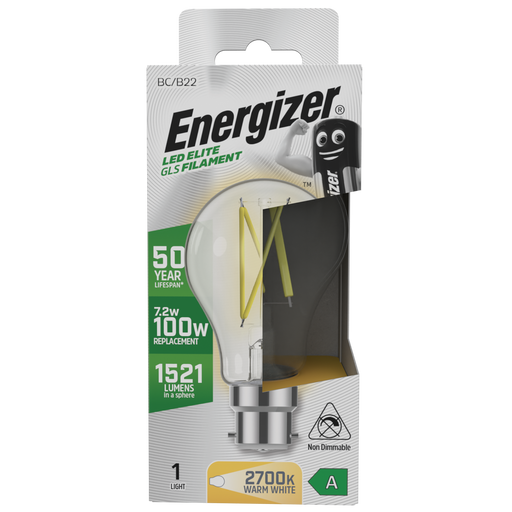
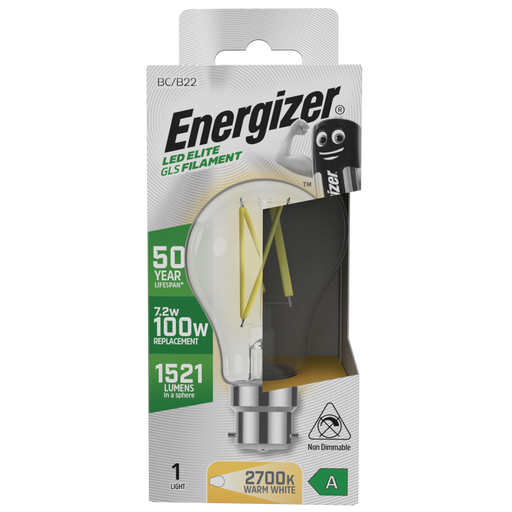
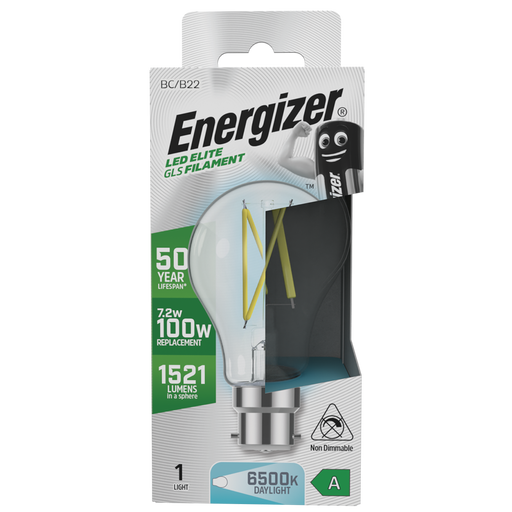
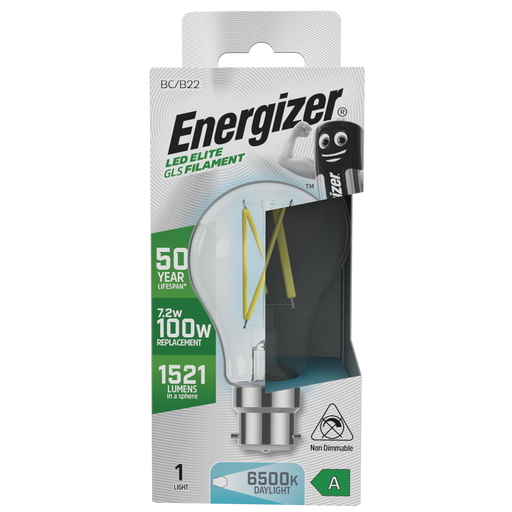
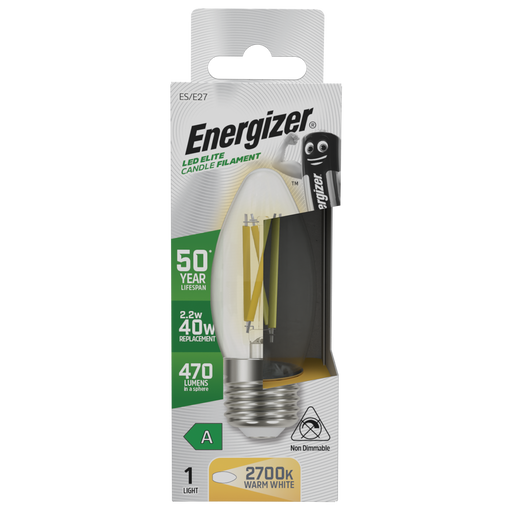
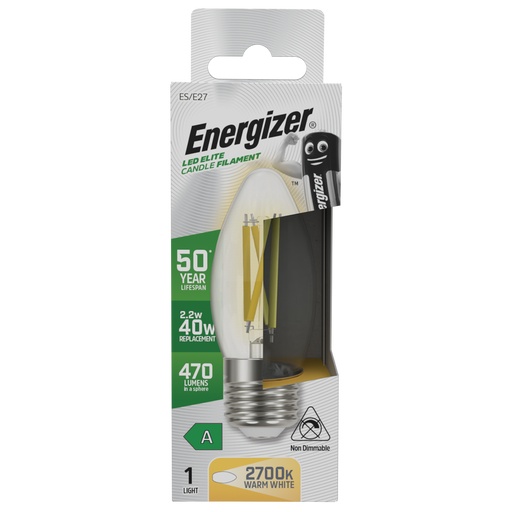
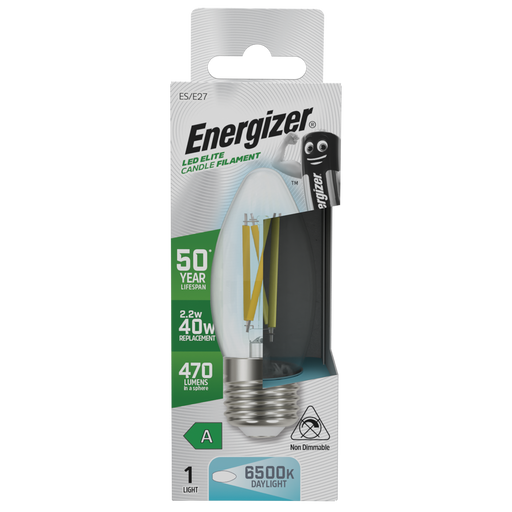
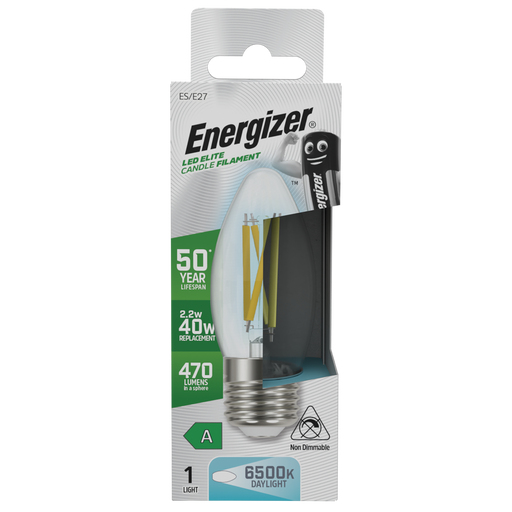
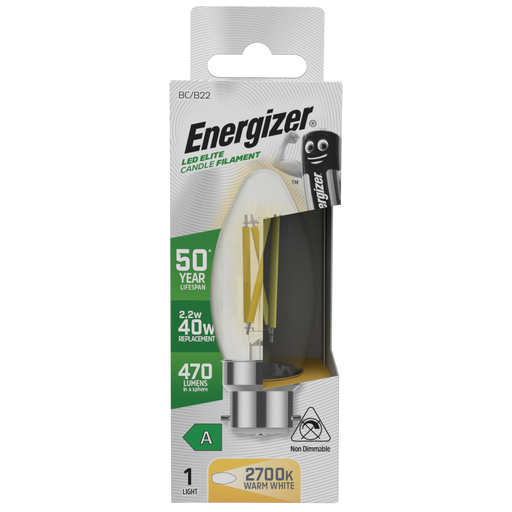
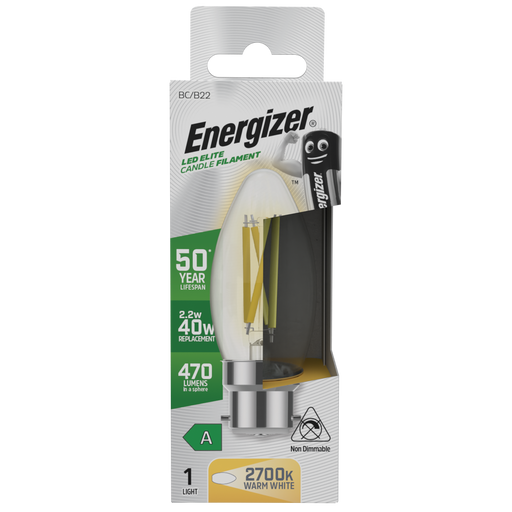
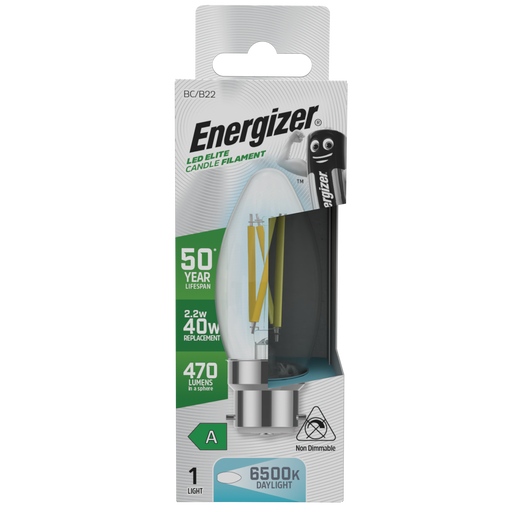
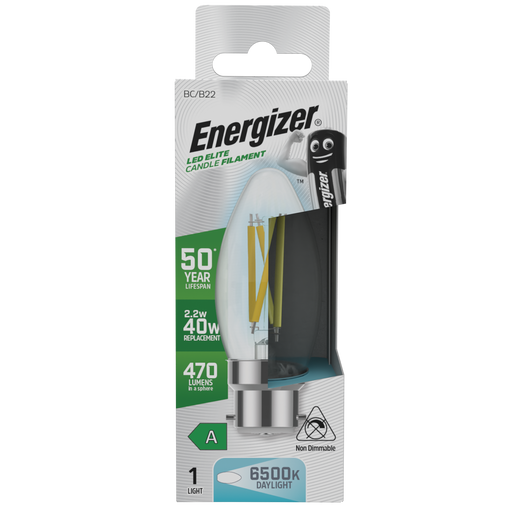
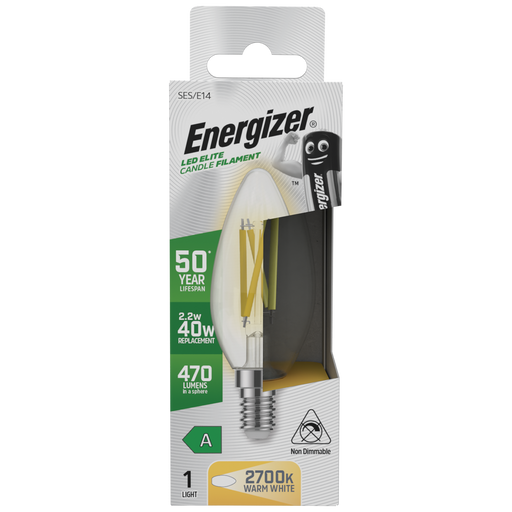
Leave a comment